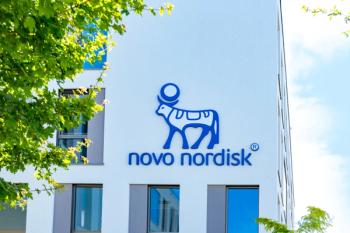
Leveraging Pre-Approval Information Exchange to Accelerate Product Success, Patient Access: Q&A with Alvana Maliqi
Cencora’s associate director of value and access strategy for its commercialization strategy & access solutions division discusses the current state of pre-approval information exchanges.
Alvana Maliqi served as lead author on Cencora’s latest research initiatives focused on pre-approval information exchange (PIE). She spoke with Pharmaceutical Executive about the research and how the industry can utilize this information more efficiently.
Pharma Executive: What does the passage of the PIE legislation allow biopharma companies to do?
Alvana Maliqi: The Consolidated Appropriations Act, 20231 (or pre-approval information exchange [PIE] legislation”) was signed into law in 2022, providing a safe harbor for pharmaceutical companies to proactively engage in PIE with payers about new products and/or new indications. Previously, this pathway was initially supported by the 2018 FDA Final Guidance for pre-approval communications.
Since 2018, biopharma manufacturers are permitted to share unbiased, factual, accurate, and non-misleading information on pipeline products or new indications, such as product information, indication sought, patient utilization projections, clinical study results, product pricing information, and anticipated timeline for regulatory decision.
Through the information sharing, payers gain a more comprehensive understanding of the product, including place in therapy, member utilization impact, efficacy and safety data, etc.—all of which can help to inform their budget planning and formulary coverage decisions. It’s also beneficial for biopharma manufacturers, as it enables feedback from payers on clinical data and other information that may inform their launch plans and post-approval evidence strategy.
PE: What is the current state of pre-approval information sharing between payers and biopharma manufacturers?
Maliqi: As more novel innovative therapies, such as cell and gene therapies, enter the development pipeline, payers seek information about products earlier in the process.
While pre-approval communication increased in the last five years since its inception in 2018, there remains a gap between what payers consider valuable and what is currently being provided to payers from biopharma manufacturers. To better understand the current state of PIE between biopharma manufacturers and payers and to identify the types of information payers value but may not be receiving, we surveyed members of Cencora’s Managed Care Network. Our findings, which we presented2 at AMCP Annual Meeting 2024, revealed:
- Nearly half of the payers surveyed perceive a gap in PIE needed for their organization versus what was available.
- Payers identified pricing information (90%), place in therapy (67%) and patient use projections (48%) as the most common types of pre-approval information needed but not provided by biopharma manufacturers.
- All payers surveyed believe that closing the PIE gap would improve their formulary decision-making ability.
Although PIE permits the proactive dissemination of PIE, payers do not consistently receive pre-approval dossiers without first requesting them — representing a missed opportunity for biopharma manufacturers. Given some of the misperceptions and questions raised by biopharma manufacturers in the past, mostly prior to the PIE legislation, there remains a critical need to increase awareness of what PIE permits and how valuable payers view this information sharing to be.
PE: When do payers prefer to receive pre-approval information, and is there any nuances in various drug categories?
Maliqi: It’s a great question, and one we aimed to address in separate research we presented3 at AMCP Annual Meeting 2024. Generally, majority of payers prefer to receive the pre-approval information within 6 months of anticipated FDA approval, with a quarter preferring up to 1 year prior.
However, for products with an anticipated high cost and/or high utilization, payers prefer to receive pre-approval information even earlier than usual. We identified three categories of products that payers prefer information on earlier: cell and gene therapy, oncology, and rare diseases. For example, 60 percent of payers said they prefer information on cell and gene therapies greater than 6 months prior to anticipated regulatory approval—with 16 percent saying they prefer to receive the information greater than a year ahead of the anticipated decision.
PE: How could manufacturers better communicate pre-approval information to payers?
Maliqi: Biopharma manufacturers that are new to PIE should ideally allocate at least nine to 12 months for planning and development prior to their initial engagement. When designing their PIE engagement strategy, biopharma manufacturers should consider leveraging traditional personal channels as well as digital nonpersonal channels to communicate product-related information. For example, Cencora’s FormularyDecisions is a secure online platform that facilitates information exchange between vetted payers (more broadly referred to as “healthcare decision makers”) and biopharma manufacturers
Based on our experience partnering with biopharma manufacturers to support PIE projects across diverse areas, we have identified key opportunities for enhancing communication with payers, including:
- Earlier engagement: initiate discussions with payers early in the development process, potentially as early as Phase 2 for certain drug categories, to gauge their informational needs and preferences — all of which can help to inform strategies leading up to the launch.
- Tailored information: provide information and data tailored to the specific requirements and priorities of different payer organizations.
- Clarity and transparency: ensure unbiased, factual, accurate, and non-misleading communication of pre-approved data, disclosing current regulatory status while highlighting pertinent product information.
- Compliant and strategic information sharing: proactively engage payers and share information, including information payers deemed most impactful: product pricing information, place in therapy and factual presentation of study results.
- Timely updates: keep payers informed about regulatory milestones, study results and any changes in the development process in a timely manner to facilitate their planning process.
By implementing these strategies, biopharma manufacturers can effectively communicate pre-approval information to payers, which can help them better position their product for market success.
Sources
Connolly, Gerald. Consolidated Appropriations Act, 2023. April 16, 2021. https://www.congress.gov/bill/117th-congress/house-bill/2617/text
Penley, Ben; Maliqi, Alvana; Young, Nancy; Dragovich, Charles. Minde the Pre-Approval Gap. Cencora. https://storage.pardot.com/168232/17107989284okZZC4a/2024_AMCP_Spring____2206_Mind_the_Gap_PIE_Poster__1___FINAL.pdf
Maliqi, Alvana; Penley, Ben; Young, Nancy; Dragovich, Charles. Early Implementation of PIE for Specific Drug Categories. https://storage.pardot.com/168232/1711469388Z2RW3V6c/Early_PIE_PIE_Poster_Outline_AMCP_2024_Poster_2___FINAL.pdf
Newsletter
Lead with insight with the Pharmaceutical Executive newsletter, featuring strategic analysis, leadership trends, and market intelligence for biopharma decision-makers.





